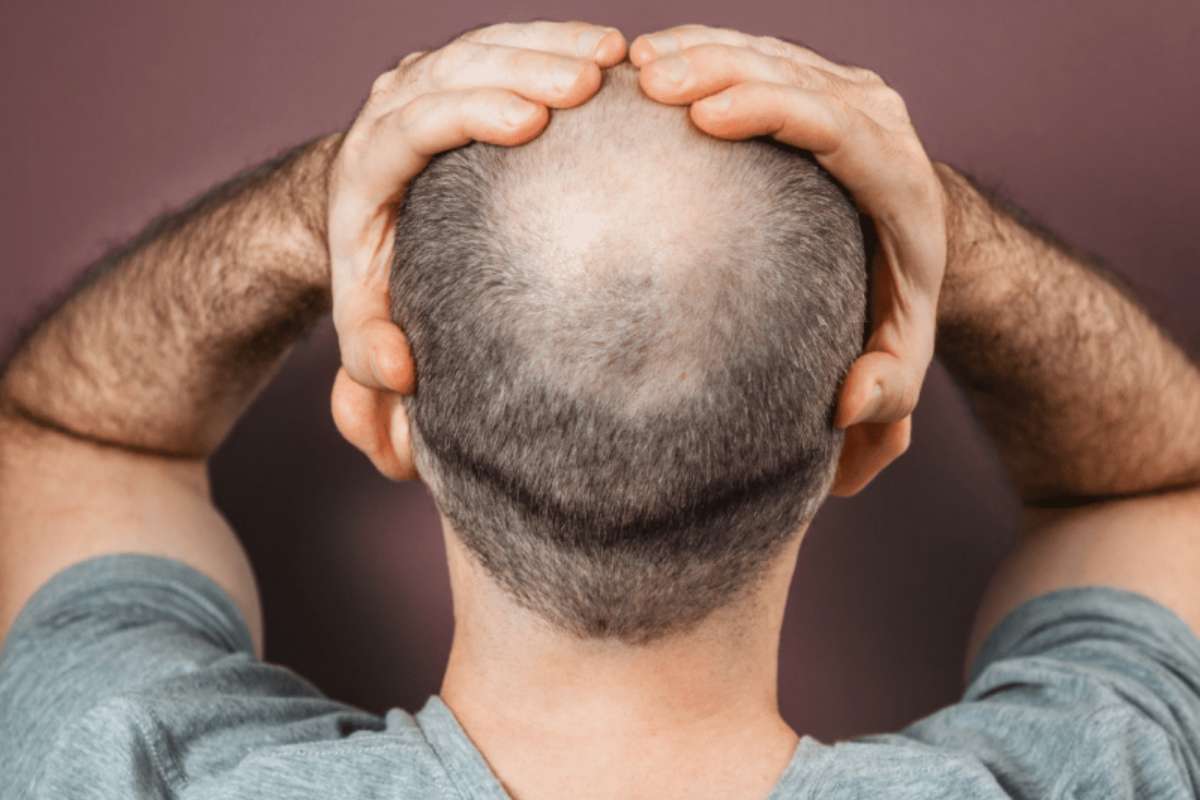To us, hair is one of the most fascinating parts of the human body. Did you know that hair grows on every surface of the body except the palms, lips and genitals. New hair is constantly being synthesized as it grows and sheds in a cyclical fashion and everyone can have their own unique style and growth patterns. It truly is amazing.
And while our main focus here is hair loss and hair transplants, the science of hair itself is an incredible thing to study. The hair follicle is really part of the “folliculo-sebaceous unit” and it’s so much more complex that we give it credit for. There are many elements of our hair that most people don’t even realize, for example, did you know that your hair will grow slightly quicker in warm climates as opposed to colder ones? Or that all of the hair shafts that you see on your head is actually already dead. The only living part of your hair is the follicle under the skin, but once the hair itself emerges from the skin, it is made up of dead cells.
When it comes to hair loss, our goal is to help you understand why your hair may be thinning or falling out and help determine a course of action to help restore your hair or prevent it from thinning further. And in order to do that we must first educate you on various aspects of your hair in general.
Did you know that thin hair is not the same as fine hair? Or that coarse hair is different than thick hair?
It’s true.
While these adjectives used to describe hair seem very similar, they actually have very different meanings.
Thin Hair vs. Fine Hair
Thin hair and fine hair are often confused because the words thin and fine can sometimes be used interchangeably, but that’s not that case when it comes to your hair.
When we’re talking about thin hair we’re talking about the density of the hairs and when we’re talking about fine hair, we’re talking about the diameter of the actual hair shaft itself.
So, in the hair expert vocabulary, thin hair means that there are less follicles within the same area of your scalp. The follicles are more spread out on your scalp, which means that you have less hair per square inch, thus making it appear thinner and in some cases, the scalp may be visible through the hair. Simply put, thin hair is less hairs on your head.
Thin hair isn’t necessarily a bad thing, but it does present some challenges when it comes to hair styling.
Because you have less hair per square inch on your head, you don’t have the same volume in your hair as a person with thicker hair. There are many styling products available that can help add volume to thin hair to give it the appearance of more volume and shape. Another important strategy for thin hair is find a hair style or a haircut that compliments the density of your hair and creates an illusion of thicker hair.
If you notice your scalp showing through more when you have shorter hair, and you don’t like that sort of look, then a longer haircut may suit you better as it can hide some of those thinning spots.
Speaking of thinning, thin hair is not the same as thinning hair. Thinning hair is what we refer to when you’re starting to lose your hair. Thin hair has nothing to do with you losing hair, it’s referring to the baseline amount of hair you have starting in your youth, which is generally based on genetics.
Fine hair, unlike thin hair, has to do with the actual diameter of the individual strand of hair. A fine hair measures less than 60 microns, that’s 16 or more hairs per millimeter. Fine hair is most common in Caucasians but can also be found in Black/Afrocentric hair. Asian hair tends to be the thickest strands which is the reason it’s used more often to make human hair wigs (fun fact). Hispanic hair can be a mixture of many different ethnicities so their locks are the least predictable in texture.
In the case of thin vellus hair on your body, like that on your nose where you may not even be able to see it, it’s fine texture is because it’s missing the medulla, the innermost part of the hair. Because this area of the hair shaft is missing, it makes the hair diameter smaller and visibly lighter, thus leading to fine, light hair. However, on the scalp, your hairs all have 3 parts: medulla, cortex, and cuticle and finer hair simply has less of each.
The cuticle is the outermost layer and most easily damaged so fine hair can become brittle and break more easily so you’ll want to avoid traumatic hair processing and grooming like bleach, perms, and tight braids. You’ll also want to use gentle shampoos conditioned regularly to maintain its health. However, with some fine hair you will also want to avoid products that are heavy because they can weigh down the hair and make it look even thinner.
Thick Hair vs. Coarse Hair
Just like thin hair vs fine hair, coarse hair vs thick hair has to do with the density of the hair vs. the diameter of the hair.
Thick hair means that you have more hair follicles per square inch while coarse hair refers to hair that has a wider diameter.
Thick hair means that you have more hair on your head. It has nothing to do with the curl, feel, or diameter of your hair, but rather the actual amount of hair. This translates to more volume and can allow for various hairstyles to hold their shape a bit better than thin hair, but there are also downsides.
Having more hair makes it harder to tame and can make some hairstyles look too big and voluminous, so choosing a hairstyle that fits your specific type of hair may be equally important with thick hair as with thin.
Coarse hair measures 80 microns or greater, or less than 12 hairs per millimeter. Because of its more robust size, coarse hair can general tolerate more trauma than fine hair and for every hair on your head there’s more “oomph” or more total hair volume. Coarse hair does not necessarily mean that your hair is going to feel rough or have a dull appearance, it specifically has to do with the diameter of the hair shaft.
If you’ve been to the office and had your hair evaluated you may have heard Dr. Krejci describe your hair as “angle silk;” those are the folks with both thin AND find hair. While those with thick AND coarse hair she refers to as a “furry bear.” Both the density and the texture affect the way your hair looks and feels but both are traits you are born with.
Why Understanding Hair Density is Important
Knowing what type of hair you have, whether its thin, thick, coarse, or fine, is important in understanding what types of haircuts and hairstyles will best fit you and what grooming practices your hair will tolerate. Not everyone is the same, so using the same product as someone else may not give the best results but knowing your hair type will allow you to make more informed decisions about your hair.
Understanding the density and texture of your hair can also help you to know what sort of products you may need to use to help keep your hair healthy, manageable and looking it’s best. Many hair products are designed with certain types of hair in mind, so knowing your hair anatomy will make it easier to choose which products will work best.
In addition to being able to better maintain your hair, understanding hair density and texture can help you when it comes to hair thinning as well. Someone with thin hair may notice thinning areas much quicker if the scalp becomes more visible compared to someone with very thick hair. Similarly with coarse hair, they may notice when the hairs start to feel softer if they are “miniaturizing” like with Male Pattern Baldness.
Regardless the density or texture, once our hair follicles die off there’s no way to bring them back. Keeping your hair strong and healthy will help prevent hair from thinning at least from the outside damage that we can control (unfortunately we cannot control genetics) and keep you looking your best.
If you have any questions about hair loss or hair thinning, please contact us today at the Limmer Hair Transplant Center, we’re happy to help.







